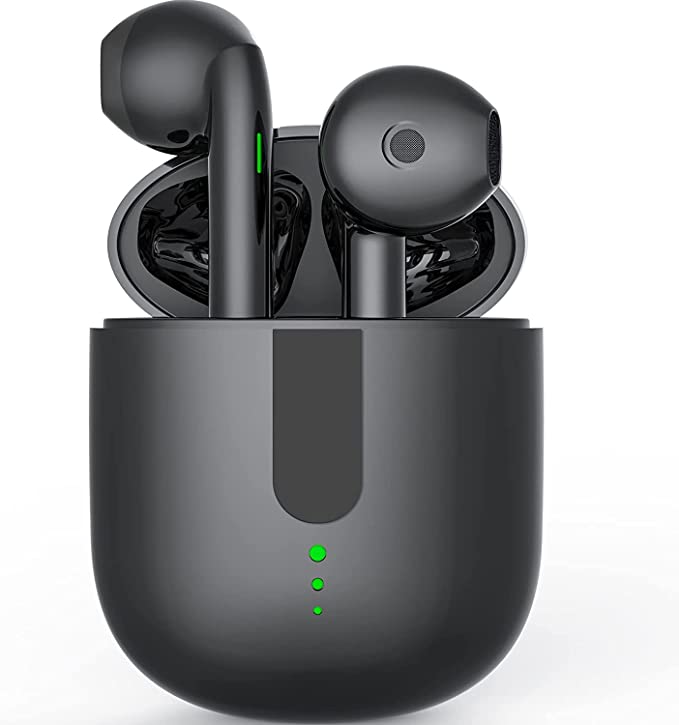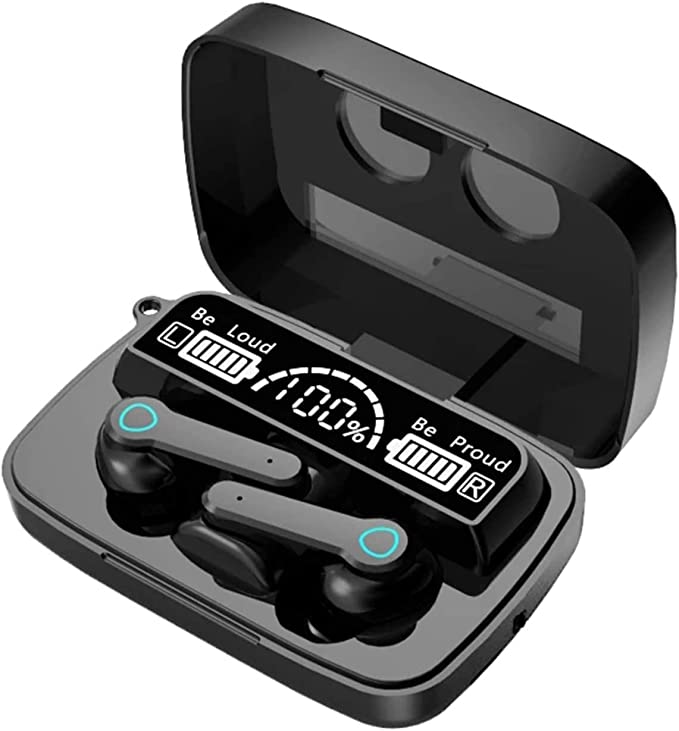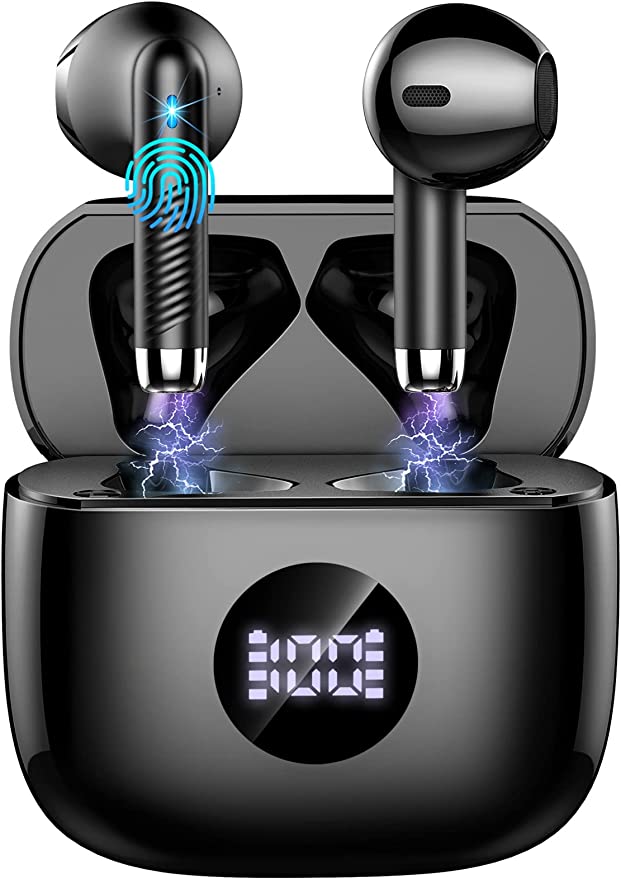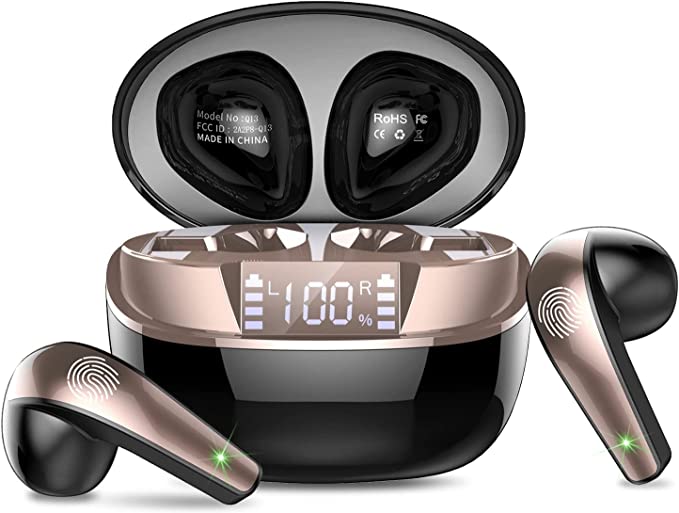The $15 Earbud Gamble: A Case Study in Tech vs. Ergonomic Design
Update on Nov. 14, 2025, 9:58 a.m.
Welcome to the paradox of the $15 earbud.
You see a product like the ROMOKE T19 on a sales page. The spec sheet is staggering for the price: Bluetooth 5.3, 40 hours of total battery, a 1-100% LED power display, IP7 waterproofing, and 13mm dynamic drivers. It has over 4,500 reviews, many of which are glowing.
Then you see the final rating: 4.0 out of 5 stars.
This 4.0-star rating is the key. It’s not a 4.5 or 4.8. It’s a “good, but…” rating. It hints at a deep polarization in the user experience, a significant trade-off hidden beneath the impressive tech specs.
This isn’t a review, but an analysis of those trade-offs. The ROMOKE T19 is a perfect case study in what modern, “commoditized” technology can offer for $15, and what it cannot. It is a lesson in the difference between electronic engineering (which has become incredibly cheap) and physical engineering (which has not).

The Core Problem: The “One-Size-Fits-All” Ergonomic Gamble
The first clue is a major error in the product’s data sheet, which often lists its “Form Factor” as “Over Ear.” This is incorrect. The T19 is a “semi-in-ear” (or “half-in-ear”) earbud, a design that rests at the entrance of the ear canal, similar to Apple’s classic “stick” design but with a small tip.
For many products, this “semi-in-ear” design is a feature, prized for comfort. But for the ROMOKE T19, the 4,533 reviews show that this is the product’s single biggest point of failure.
- One user (“Rae”) reports: “I have slightly smaller than average ears and these just don’t stay in, no matter what I do… the slightest movement makes them fall out.”
- Another (“Marissa Howard”) states: “They are just a bit large and fall out of my ears from time to time.”
- A third (“Hanna”) is blunt: “they aren’t comfortable in my ears they hurt them… due to me having small ear holes.”
This is the $15 gamble. The T19 appears to be a “one-size-fits-all” design that is, in reality, a “one-size-fits-larger-ears” design. For those it doesn’t fit, it’s not just uncomfortable—it’s unusable.

The First Principle: Why a Bad Fit Equals Bad Sound
This ergonomic flaw has a direct, physical consequence on the audio. The spec sheet promises “Immersive Stereo Sound Quality” from a large 13mm dynamic driver and “DSR lossless HD rendering.”
But user reviews tell a different story: * “Sounds not the best, very little bass and not loud” (Este round). * “because they don’t fit right/flush with my ears a lot of the sound escapes” (Angela C).
This is a perfect, real-world demonstration of acoustic physics. Bass frequencies are pressure waves. To hear them, the earbud must create a sealed acoustic chamber in your ear canal.
If the earbud is “a bit large” and “doesn’t fit flush,” that seal is broken. All the low-frequency pressure (bass) created by that big 13mm driver leaks out into the air. The “DSR” processing and large driver are working, but the sound is escaping before it ever reaches your eardrum.
This physical failure of the fit is what leads directly to the audio failure.

The “Commoditized Miracle”: What Your $15 Actually Buys
If the fit is a gamble and the sound is compromised, why does this product have a 4.0-star rating at all? Why does it get a 5.0/5.0 for “Value for money”?
Because you are not buying a high-fidelity, custom-fit earbud. You are buying a set of state-of-the-art commodity components that, just a few years ago, would have cost $100.
1. The “Worry-Free” IP7 Waterproofing
The T19 is rated IP7, meaning it can be submerged in 1 meter of water for 30 minutes. This is a manufacturing process (using nano-coatings and seals) that has become incredibly cheap. This spec is real. It’s a “perfectly good for sports” earbud that, as one user put it, you don’t have to “go broke replacing” if you lose one.
2. The “It Just Works” Bluetooth 5.3
The Bluetooth 5.3 chip is a modern, stable, and power-efficient component. It’s an off-the-shelf part that provides a “faster transmission speed, stronger connection stability,” and simple, one-step pairing. This tech is real and it works.
3. The Real Star: 40H Battery and LED Display
This is the product’s true triumph. The 4.6-star “Battery life” rating from users confirms the “up to 8 hours” (single charge) and “40hrs” (with the case) claims are largely accurate.
The LED Power Display that shows a 1% to 100% digital readout, plus the individual status of each bud, is a feature that adds immense user value by eliminating battery anxiety.
This battery system—which would have been a $100+ feature in 2019—is the true “miracle” of commoditization.

The Final Insult: The Case
As a final data point on the disconnect between tech and physical design, users report one last ergonomic flaw: the earbuds are “difficult to pull out of the charging case.” Users “Stacey A. Morrison” and “Rae” both note the combination of “strong magnets” and a “smooth, black gloss finish” makes the earbuds “hard to grip.”
Coda: The $15 Gamble
The ROMOKE T19 is a perfect artifact of our current manufacturing era. It proves that excellent electronic engineering (battery, chips, LEDs) has become astonishingly cheap.
But it also proves that physical engineering (ergonomics, the shape of the human ear, the feel of a product) is still hard.
The 4.0-star rating is the perfect summary of this gamble. For the 55% of 5-star users, the earbuds happened to fit, and they got an incredible $15 bargain. For the 11% of 1-star users, the product was unusable.
You are, quite literally, gambling $15 on whether this “one-size-fits-all” design fits you. If it does, you’ve won. If not, you’re only out $15.












































